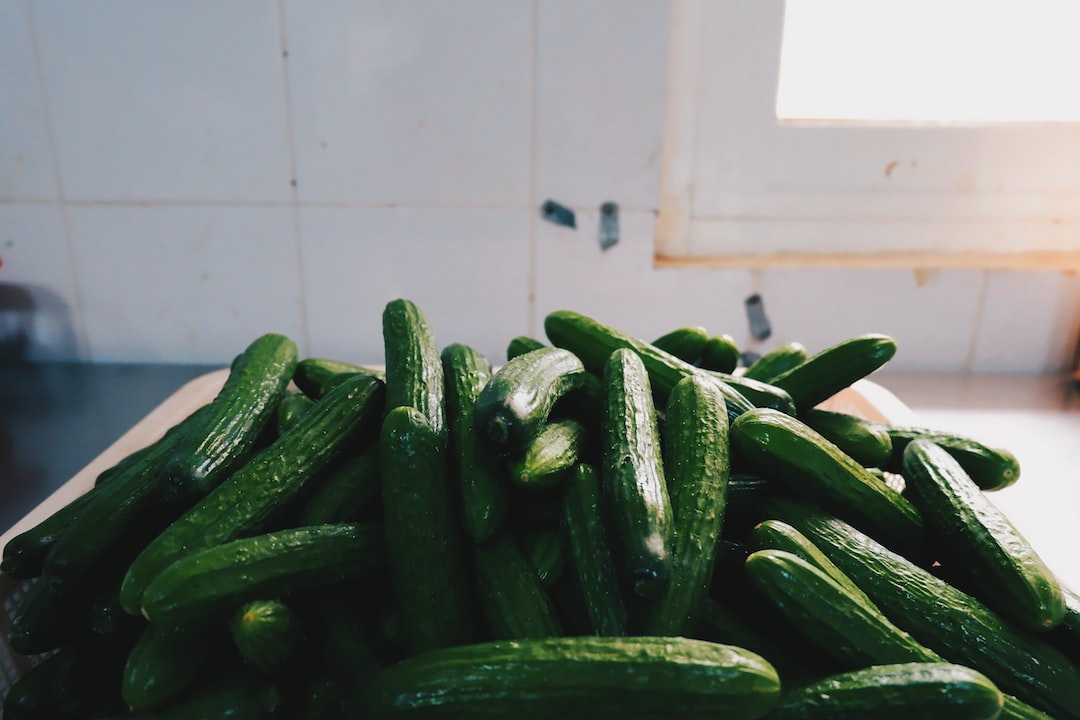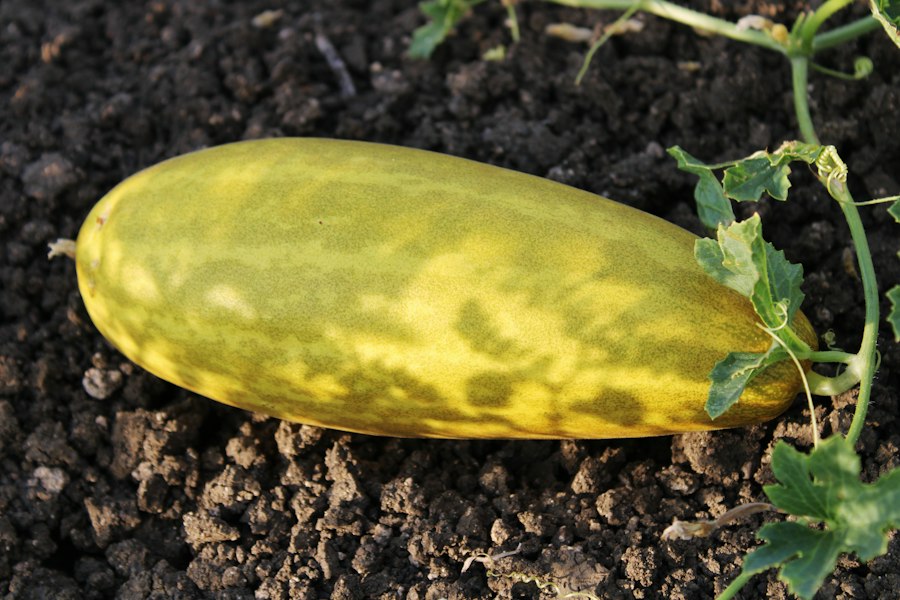Ready to Pick: How to Tell When Your Cucumbers Are Ripe

Cucumbers are a popular vegetable that is enjoyed by many people around the world. They are not only delicious but also packed with nutrients and have numerous health benefits. However, in order to fully enjoy the flavor and benefits of cucumbers, it is important to harvest them at the right time. Harvesting cucumbers properly ensures that they are at their peak ripeness and have the best taste and texture.
Harvesting cucumbers at the right time is crucial because if they are left on the vine for too long, they can become overripe and develop a bitter taste. On the other hand, if they are harvested too early, they may not have fully developed their flavor and texture. Therefore, it is important to understand the growth cycle of cucumbers and the factors that affect their ripening in order to harvest them at the perfect time.
Key Takeaways
- Cucumbers have a growth cycle that includes flowering, fruiting, and ripening.
- Factors that affect cucumber ripening include temperature, sunlight, and water.
- Visual cues for identifying ripe cucumbers include size, color, and texture.
- The thumb test involves pressing on the cucumber to check for firmness and ripeness.
- Harvest cucumbers in the morning or evening, using a sharp knife or scissors to avoid damaging the plant.
Understanding the Growth Cycle of Cucumbers
Cucumbers go through several stages of growth before they are ready to be harvested. Understanding these stages can help you determine when it is the right time to pick your cucumbers.
The first stage of cucumber growth is the seedling stage, where the plant emerges from the seed and starts developing its leaves. During this stage, it is important to provide the plant with adequate water and nutrients to ensure healthy growth.
The next stage is the flowering stage, where the plant produces flowers that eventually turn into cucumbers. This is an exciting stage because it indicates that your cucumbers will soon be ready for harvest. It is important to note that not all flowers will turn into cucumbers, so it is normal for some flowers to fall off without producing fruit.
After the flowers have been pollinated, the cucumbers start to develop. They go through a stage called fruit set, where they grow rapidly in size. This is the stage where you need to start paying close attention to your cucumbers, as they can quickly go from underripe to overripe.
The final stage of cucumber growth is the ripening stage. This is when the cucumbers reach their full size and develop their characteristic color and flavor. It is important to harvest cucumbers at this stage to ensure that they have the best taste and texture.
Factors That Affect Cucumber Ripening
Several factors can affect the ripening of cucumbers. Understanding these factors can help you ensure that your cucumbers ripen properly and have the best quality.
One of the main factors that affect cucumber ripening is temperature. Cucumbers thrive in warm temperatures, ideally between 70-90°F (21-32°C). If the temperature is too hot or too cold, it can slow down the ripening process or cause the cucumbers to develop off flavors.
Another factor that affects cucumber ripening is sunlight. Cucumbers need plenty of sunlight to ripen properly. Lack of sunlight can result in underripe cucumbers that lack flavor and have a pale color.
Watering is also an important factor in cucumber ripening. Cucumbers need consistent moisture to grow and ripen properly. Inconsistent watering can lead to uneven ripening and poor quality cucumbers.
Lastly, the variety of cucumber you are growing can also affect the ripening process. Different varieties have different maturation times, so it is important to choose a variety that suits your climate and desired harvest time.
Visual Cues for Identifying Ripe Cucumbers
| Visual Cues | Ripe Cucumbers |
|---|---|
| Color | Dark green |
| Size | Consistent and firm |
| Texture | Smooth and shiny |
| Shape | Straight and uniform |
| Stem | Firmly attached |
There are several physical characteristics that can help you identify ripe cucumbers. By paying attention to these cues, you can ensure that you are harvesting your cucumbers at the right time.
One of the main visual cues for ripe cucumbers is their color. Most cucumbers are green when they are unripe and turn a darker shade of green or yellow when they are ripe. The exact color will depend on the variety you are growing, so it is important to know what color your cucumbers should be when they are ripe.
Another visual cue for ripe cucumbers is their size. Cucumbers should reach their full size before they are harvested. If they are still small and underdeveloped, it is best to leave them on the vine for a little longer.
The texture of the cucumber can also indicate its ripeness. Ripe cucumbers should feel firm but not too hard. They should have a slight give when gently squeezed, indicating that they are juicy and flavorful.
Lastly, the presence of spines on the cucumber can also indicate its ripeness. As cucumbers ripen, the spines tend to become softer and less prickly. If the spines are still sharp and hard, it is a sign that the cucumber is not yet ripe.
Testing Cucumbers for Ripeness: The Thumb Test
The thumb test is a simple and effective way to determine if a cucumber is ripe. It involves applying gentle pressure to the cucumber with your thumb and observing its response.
To perform the thumb test, gently press your thumb against the skin of the cucumber. If the cucumber feels firm and does not give under pressure, it is not yet ripe and needs more time to develop. If the cucumber gives slightly under pressure and feels firm but not hard, it is likely ripe and ready to be harvested. However, if the cucumber feels soft or mushy, it is overripe and should be discarded.
It is important to note that the thumb test may not be accurate for all varieties of cucumbers. Some varieties have thicker skins that may not respond as well to gentle pressure. In these cases, it is best to rely on other visual cues to determine the ripeness of the cucumber.
Harvesting Techniques for Cucumbers

There are several techniques for harvesting cucumbers, each with its own pros and cons. The method you choose will depend on your personal preference and the specific needs of your plants.
One common method for harvesting cucumbers is to use a pair of garden shears or scissors to cut the cucumber from the vine. This method allows for a clean cut and minimizes damage to the plant. However, it can be time-consuming and may require bending or kneeling down to reach the cucumbers.
Another method is to twist or snap the cucumber off the vine by hand. This method is quick and easy but can sometimes result in damage to the plant if not done carefully. It is important to hold the cucumber close to the vine and gently twist or snap it off to avoid tearing or breaking the stem.
Some gardeners prefer to harvest cucumbers by pulling them off the vine. This method involves grasping the cucumber firmly and pulling it downwards until it detaches from the plant. While this method is quick and easy, it can sometimes result in damage to the plant if not done carefully.
Best Time of Day to Pick Cucumbers
The best time of day to harvest cucumbers is in the morning when temperatures are cooler. This is because cucumbers tend to be crisper and more flavorful when harvested in the morning. As temperatures rise throughout the day, cucumbers can become limp and lose some of their flavor.
It is also important to avoid harvesting cucumbers when they are wet from dew or rain. Wet cucumbers are more prone to rotting and can develop mold or other fungal diseases. If your cucumbers are wet, it is best to wait until they have dried off before harvesting them.
Storing Cucumbers After Harvest
After harvesting cucumbers, it is important to store them properly to extend their shelf life and maintain their quality. Here are some best practices for storing cucumbers:
– Cucumbers should be stored in a cool, dry place away from direct sunlight. A temperature of around 50-55°F (10-13°C) is ideal for storing cucumbers.
– Cucumbers should not be stored near fruits that produce ethylene gas, such as apples or bananas. Ethylene gas can speed up the ripening process and cause cucumbers to spoil faster.
– Cucumbers should be stored unwashed and with their stems intact. Washing cucumbers before storage can introduce moisture and increase the risk of rotting.
– If you have harvested more cucumbers than you can consume, you can also consider pickling them to extend their shelf life. Pickled cucumbers can last for several months when stored properly.
Common Mistakes to Avoid When Harvesting Cucumbers
There are several common mistakes that people make when harvesting cucumbers. By avoiding these mistakes, you can ensure a successful harvest and enjoy high-quality cucumbers.
One common mistake is harvesting cucumbers too early. It can be tempting to pick cucumbers as soon as they start growing, but this can result in underripe cucumbers that lack flavor and have a tough texture. It is important to wait until the cucumbers reach their full size and develop their characteristic color before harvesting them.
Another mistake is leaving cucumbers on the vine for too long. Overripe cucumbers can develop a bitter taste and have a mushy texture. It is important to harvest cucumbers at the right time to ensure that they have the best flavor and texture.
Improper handling of cucumbers after harvest is another common mistake. Cucumbers are delicate and can easily bruise or become damaged if not handled carefully. It is important to handle cucumbers gently and avoid dropping or squeezing them.
Tips for Maximizing Your Cucumber Yield
If you want to maximize your cucumber yield, there are several best practices that you can follow:
– Plant cucumbers in a sunny location with well-drained soil. Cucumbers thrive in full sun and require at least 6-8 hours of direct sunlight per day.
– Provide cucumbers with consistent moisture. Water them deeply and regularly, especially during hot and dry periods.
– Use trellises or stakes to support cucumber vines. This will help keep the plants off the ground, improve air circulation, and prevent diseases.
– Mulch around cucumber plants to help retain moisture and suppress weeds. This will also help keep the fruit clean and prevent soil-borne diseases.
– Regularly prune cucumber plants to remove any dead or diseased leaves. This will help improve air circulation and reduce the risk of fungal diseases.
– Harvest cucumbers regularly to encourage more fruit production. Leaving overripe cucumbers on the vine can signal to the plant that it has completed its life cycle and reduce further fruit production.
By following these tips, you can ensure a bountiful harvest of high-quality cucumbers that are packed with flavor and nutrients. Harvesting cucumbers at the right time and taking proper care of them after harvest will ensure that you can enjoy their delicious taste all season long.



